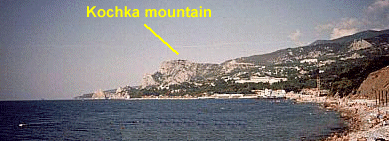Luna 3 - the first view of the moon's far side
One of the origins of Luna-3 was the work by Boris Raushenbakh on attitude control started in 1955 in the NII-1 rocket research institute of the Ministry of Aviation. This work was co-ordinated with Korolev's design bureau and had as its goal stabilised photo-reconnaissance satellites. Raushenbakh's group was contracted by the lunar project section Korolev's design bureau OKB-1 to design the attitude control for the E-2 variant of lunar exploration craft intended to image the Moon's hidden side. The manager of the lunar probe project at OKB-1 was Gleb Maksimov. An excellent account of these early Soviet lunar missions can be found in (4) and (14).
The radio system was designed by deputy chief designer of the NII-885 (Scientific Research Institute of Radio Instrument Building, established 1938), Yevgeniy Boguslavskiy at NII-885 and it provided trajectory measurements, telemetry and command and command verification functions. Boguslavskiy and Boris Chertok (1) (deputy chief designer at Korolev's OKB-1) preferred pulsed systems for telemetry and ranging ever since the 1940's when Boguslavskiy had criticized the German use of carrier based radio systems in their missiles. However for E-2A Boguslavskiy surprised everyone by designing a continuous carrier system. The explanation was that tried and true methods were quicker and safer to develop under a rushed schedule. Boguslavskiy later explained that the lack of contrast in the pictures from Luna-3 was caused by lack of onboard transmitter power. The low contrast of the Luna-3 images is partly due to the fact that the Moon was illuminated from above. There isn't much contrast in a full moon. The electronics of Luna-3 was transistorized, an innovation that was regarded as risky.
 Boguslavskiy and the NII-885 was also responsible for setting up the ground station at Kochka mountain near Simeiz in the Crimea in cooperation with the military unit 32103. The station was placed on the southern slope of a mountain facing the Black Sea. It was formally a part of NII-4 under general Sokolev (1). The location probably had something to do with the fact that the Crimean Astrophysical Observatory and the Physical Institute of the USSR Academy of Sciences was, and is, located at Simeiz. The ground station and control center had been in operation since 23 September 1958, i.e the same day that the very first Soviet attempt to reach the moon was made (14)
Boguslavskiy and the NII-885 was also responsible for setting up the ground station at Kochka mountain near Simeiz in the Crimea in cooperation with the military unit 32103. The station was placed on the southern slope of a mountain facing the Black Sea. It was formally a part of NII-4 under general Sokolev (1). The location probably had something to do with the fact that the Crimean Astrophysical Observatory and the Physical Institute of the USSR Academy of Sciences was, and is, located at Simeiz. The ground station and control center had been in operation since 23 September 1958, i.e the same day that the very first Soviet attempt to reach the moon was made (14)
snip





No comments:
Post a Comment
Note: Only a member of this blog may post a comment.